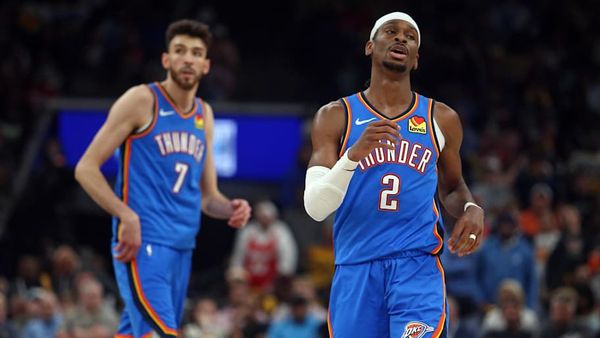
The opposition leader, Peter Dutton, has refused to specify where an additional $21bn in pledged defence spending would be allocated, nor where the money would come from, committing only to releasing the Coalition’s costings before the 3 May election.
After announcing the Coalition’s policy to spend an additional $21bn over five years, lifting defence spending to 2.5% of GDP, Dutton was questioned over where the money would come from and what specific capabilities it would be directed to.
Dutton nominated areas of defence spending, rather than specific capabilities or weapons.
“Drone capability and guided weapons, our munitions and our capability across most platforms, including [navy] frigates … our cyber defences,” he said.
“It is going to allow us to invest in our counter-aerial surveillance capabilities, it is going to allow us to invest into autonomous vehicles, both on land and underwater.”
But Dutton said without advice from the defence forces on where to spend the money, “we are not announcing procurement contracts from opposition”.
Australia’s current defence budget is $56bn annually, forecast to rise to $100bn a year by 2034 – 2.33% of GDP – under Labor’s projections.
The Coalition has previously committed to reinstate the fourth squadron of F-35A joint strike fighters at a cost of $3bn. The Coalition has also committed to writing a new national security strategy to assess the “global threat environment” and identify “key risks to Australia’s national security”.
Reporters further interrogated the opposition leader on how the extra defence spending would be funded. Dutton said the Coalition’s costings would be released later in the campaign, once the Coalition was able “to get a better understanding of where the finances are and how much money we can put into defence”.
“We will find savings… where Labor has invested into programs, where that money is not being spent efficiently. We have given guarantees in relation to health and education and other areas of commonwealth expenditure.
“We will have more to say in relation to our costings before the election … we will deal with it before the election.”
Half a million Australians out of an electorate of 18 million voters have already cast ballots, with early voting opening Tuesday.
Yesterday was a busy start to the voting period.
— AEC ✏️ (@AusElectoralCom) April 22, 2025
Nationally, around 542k votes were cast at early voting centres. This compares to 314k for day 1 in 2022.
Around 19k votes were cast with mobile voting teams & so far, approximately 2.2m postal votes have been distributed. pic.twitter.com/yzFWOp7DW2
Dutton was speaking in Perth, flanked by the MP for Canning and shadow defence minister, Andrew Hastie, who said Australia needed to spend millions more on its military because an “America-first” US could not be relied upon as an ally.
Hastie, a former officer in the SAS, told reporters increasing Australia’s capacity to defend itself was critical as the country faced its “most dangerous circumstances since the end of the second world war”.
“We can’t take anything for granted anymore,” Hastie said. “If there’s a lesson from Ukraine, it’s that you’ve got to stand on your own two feet until allies can support you.
“America is moving to an ‘America-first’ posture. We have a strong relationship with them but can’t take anything for granted.”
Hastie said the Coalition’s additional defence spending – lifting to 3% of GDP over the next decade – would enable Australia to restore depleted defence capabilities and attract new personnel to the defence forces.
“We’re going to increase our defence spend to 2.5% of GDP within five years and after 10 years it will be 3%.
“It sends a signal to the world that we are serious about defence.”
Doubts over the US commitment to its security allies, particularly in Nato, have deepened over the first three months of Donald Trump’s second presidency.
Trump has demanded Nato allies lift their spending to 5% of GDP, far in excess of the 2% Nato countries have agreed to and the 3% the Nato secretary general, Mark Rutte, has urged those countries to reach.
Trump has even threatened that he would disregard Nato’s collective defence imperative for countries he felt had not spent enough on their own defence forces.
Pentagon officials have specifically urged Australia to lift defence spending to 3% of GDP.
“The main concern the United States should press with Australia ... is higher defence spending,” the US undersecretary of defence policy, Elbridge Colby, told a Senate hearing.
“Australia is currently well below the 3% level advocated for by Nato secretary-general [Mark] Rutte and Canberra faces a far more powerful challenge in China.”
Hastie’s comments alluding to the uncertainty of the US alliance mirror those made by the prime minister in recent days. Anthony Albanese told the Guardian’s Full Story podcast the post-WWII global order had inarguably been altered.
“We certainly live in uncertain times and some of the old assumptions have changed,” he said.
“The United States, if they continue to retreat from the global role that they played, then that does change the global political dynamic.”







